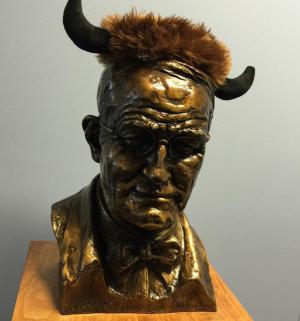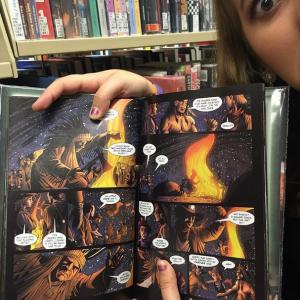Picture this: Students discovering libraries via Instagram

Seeking a way to engage students with the libraries on the CU-Boulder campus, Megan Welsh, an interdisciplinary arts and humanities librarian, and her colleague, Grace Haynes, who works in circulation and outreach at the Howard B. Waltz Music Library, used a social media platform to help new and potential students become more comfortable with the important storehouses of information.
Current students have told Welsh and Haynes that the campus libraries are too confusing and too complicated to navigate.
If students who had used the library felt that way, “we wondered what it would be like for a freshman coming in or for a transfer student – those in transition who haven’t really encountered a big academic library,” Welsh said. “We have a number of partnerships with faculty throughout campus to integrate library instruction classes into their courses, but we wanted another avenue to introduce the library to the community.”
So they turned to Instagram, a photo-sharing platform that has become increasingly popular with the 18- to 24-year-old age group.

During last fall’s orientation, Haynes and Welsh integrated Instagram with a scavenger hunt to help students navigate their way around Norlin Library. Students were given a list of clues and were directed to photograph their finds then upload the “answers.”
“We developed clues that highlighted some of the spaces and service points in the library, including the research desk and individuals who students could turn to for help,” Welsh said. Some of the clues were informational and entertaining: The students were instructed to take a “selfie” with George Norlin, former president of the university for whom the flagship library is named. (A bronze bust of Norlin, who headed the university for 22 years, sits in the library.)
“It’s a fun, low-stakes endeavor not associated with a grade to engage students,” Welsh said. The exercise also met several objectives. First, the students learned to navigate the library. Secondly, the scavenger hunt helped students understand that the library is a place where they can find people who are eager to help them. And finally, Welsh said, the students were able to identify items in the library and locate them, including the online catalog, for future use.
This past spring, Welsh and Haynes also conducted a similar event for 75 high school students from a local charter school.

“The students were struck by how huge Norlin is, and we wanted them to get used to what a college library looks like,” said Haynes, who is working to create new ways to build long-lasting relationships with students through positive experiences in the campus libraries.
The use of Instagram and other social media platforms can be applied to other educational settings, whether an online university, a college course or a high school classroom, Welsh said. She and Haynes discussed the use of social media as a learning tool in a workshop titled “Picture This! Instagrammable Education” during the 2015 COLTT (Colorado Learning and Teaching with Technology) conference in August.
Attendees at the conference were from a variety of educational backgrounds, including higher education and K-12 instructors. “It was really exciting for us to present to people who would use social media in a wide variety of settings,” Haynes said.
Welsh said the social media/scavenger hunt has been used at other universities, including North Caroline State University. A journalism school used it to help connect journalism students across the country.
Welsh and Haynes may have had as much fun conducting the scavenger hunts as the students had participating.
“We monitor the accounts where the photos are posted so we can follow the participants along the way,” Welsh said. “It’s sort of instant gratification to see what they are learning and how they are engaging.”

